Eight years ago, ArenaNet and NCsoft released Guild Wars, the first of what would ultimately be a four-part MMO saga. It was noteworthy because of its pay-once model, which is still highly unusual in the MMO genre. After the stand-alone Factions and Nightfall expansions, the Eye of the North expansion provided rewards that would pass to the sequel. Five years later, Guild Wars 2 has finally arrived, and it does many of the same things its predecessor did, but on a whole new scale.
The original Guild Wars followed many tenets of MMO design. Gameplay was primarily organized by quests, with co-op missions fulfilling the role of dungeons. The twists in Guild Wars 2 are more subtle, and consequently, the game feels more fun and varied than the original — as well as its contemporaries.
Outside of specific scenarios, most of the game is played with others, with tweaks to address spawn-camping, kill-stealing and other issues. Gone is the array of skills that create thousands of possible builds for a character. Instead, you have two skills based on your active weapons, a skill based on your active items, one healing skill, three slot skills that can be selected from a shared array and one elite skill. This smaller set manages to provide enough methods to build a character, and it also eliminates trap builds. The game makes most skills usable while moving, encouraging players to regularly move while they attack.
Also gone are the human-only player characters. There are now five playable races, and unlike many MMOs, every class is available to every race, and there are no factions. Outside of PvP environments, everyone is on the same side. Only one of the races was absent from the original Guild Wars, but they were hinted if you talked to NPCs in an area in Eye of the North.
Humans return, though they're not nearly as strong as before. Only one human kingdom, Kryta, remains, and it is desperately trying to protect itself from bandits, centaur armies and other problems. Much of its territory, including its former capital, have effectively seceded. The Charr — the first enemy race in the original Guild Wars — are back in all their militaristic might. Having rejected the worship of gods and turned on their former ruling class, the Charr have taken control of much of their old homeland. The former kingdom of Ascalon is now plagued by mad ghosts, even as it has regained much of its natural beauty.
The gnome-like Asura also return, occupying a larger stretch of their territory in the Maguuma Jungle. They provide Asura Gates, the game's waypoint teleportation system, as well as the title's revive mechanic. Even they have problems with some of the frog-like Hylek and the treasonous Inquest, who break all ethics in the name of science. The giant Norn continue to live in the Shiverpeaks, the former territory of the Dwarves. Finally, the "elf" role is filled by the Sylvari, a plant-based species borne of a great tree.
In the later game, a player's race is almost a cosmetic choice. No areas are blocked off from a race, and there are only a few race-specific skills. In the early game, the choice matters deeply due to the Personal Story system. Players answer three questions about their character, and each answer chooses three of the first five arcs of their story.
Storytelling within the arcs is primarily told through simple cut scenes. While the game occasionally presents sequences that run within the normal gameplay views, most cut scenes use a painted backdrop, with two character models visible at a time. Relatively few emotional details are presented, relying on the voice acting to sell the effect, and it works most of the time.
In Guild Wars 2, questing is replaced by tasks, with each task being very widely defined and attainable by performing one of several options. Weakening an ogre stronghold could mean killing the ogres, destroying weapons, stealing supplies, burning flags, or any combination of the above. Other objectives are liberally scattered on every map and sometimes involve touching a single object, approaching something, or engaging in a boss battle.
Dynamic Events start at defined points in the map, sometimes in response to player actions, presenting everyone in the area with an objective and rewarding players based on how much they contributed. These scenarios often go from one to the next, guiding players through a short story. Even failure is interesting, as it often opens up unique follow-up events.
The title also tries to avert the need for spawn-camping by making items interactive on a per-character basis. Enemies count if you hit them for a minimum amount of damage before they die, so that encourages players to team up to mob monsters. Death is also a lot more exciting than in most games. When reduced to 0 HP, your character drops to the ground, and a special life bar comes into view. While on the ground, you have four special actions devoted to fighting for your life. Kill an enemy before the bar drops, and you're up. Get revived by another player, you're up. Fail either, and you're dead. Click on any unlocked waypoint, pay a fee, and return to play.
One of the largest — and perhaps the most frustrating — tweak is the difficulty. While the game wisely drops your level to be proportionate with the area, the difficulty is often unpredictable. It's usually too easy to draw the full value of the positional combat system, so when it's required, it feels like a nightmarish difficulty spike. For example, many regions have a boss that can spawn once every two hours, replacing the scale of raid bosses in most MMOs. While the rewards are equivalent, the difficulty isn't. The game doesn't teach you how important evasion is until the first such boss, so it's likely to result in hundreds of deaths before players finally wise up.
In terms of intended difficulty, the five-man dungeons are akin to raid dungeons, but good luck surviving the normal-difficulty dungeon runs without a highly coordinated team, let alone the post-story explore mode scenarios. Trash mobs hit harder and can wipe out a team faster than most MMO bosses, and the actual bosses use traditional boss tricks but are less merciful. The problem is that the game doesn't offer a way to intuitively clarify that these dungeons are meant to be so difficult, and that can throw off many players.
Fortunately, Guild Wars 2 knows how to thrill the senses. From the login screen to the wonderfully detailed environments, the game provides an awe-worthy amount of eye candy. Vistas provide players with spectacular preplanned views, and Assassin's Creed fans will find the vista mechanic familiar, albeit with a different climbing method. This does not account for the detailed character models, wide variety of equipment, or the polished, smooth interfaces throughout the game.
The soundscape is a tad weaker. In combat, sound effects are nicely indicative without being sickening, and the music combines new tracks with familiar echoes from the original title. The voice work is where things get spotty. The player character voice sets are unexceptional, and highly repeated in-combat lines are extremely annoying. Luckily, the game doesn't report the status effect updates every single time, although that negates their practical value.`
Guild Wars 2 has more micropayment options than the original. The Black Lion Trading Company operates primarily on gems, which can be exchanged with "various currencies." At a price of $5 USD, 400 gems can be utilized to unlock town-only equipment pieces; single-use toys; inventory space increases; one-hour boosters that increase your experience, gold, or drop rates; random additions to your dye and minipet stocks; and Black Lion Keys, which let you open randomly dropped chests. Nothing is critical, but perhaps more controversially, the gems double as Guild Wars 2's answer to Eve Online's PLEX system. Players can sell gems for gold to gain an economic advantage, although it's a level that can be easily obtained without paying, especially with the help of the in-game trading post.
Ultimately, Guild Wars 2 does what the original Guild Wars did eight years ago: take the trends of its era, tweak them to do something similar yet distinct, combine them with a strong setting to create an enjoyable product, and make it available for a single payment, with optional micropayment-based extras. At $60, Guild Wars 2 is easily one of the best MMO values in the pay realm this year, and it's superior to every free-to-play in the genre.
Score: 8.5/10
More articles about Guild Wars 2


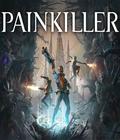
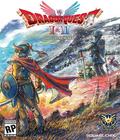
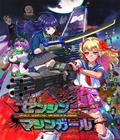
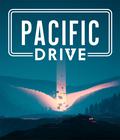



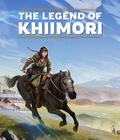

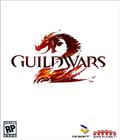 While Guild Wars 2 adds a persistent world, it retains the unique characteristics of the original game, including a strong narrative, extensive instanced game play, an anti-grind design philosophy, and strong support for competitive play.
While Guild Wars 2 adds a persistent world, it retains the unique characteristics of the original game, including a strong narrative, extensive instanced game play, an anti-grind design philosophy, and strong support for competitive play. 


















































